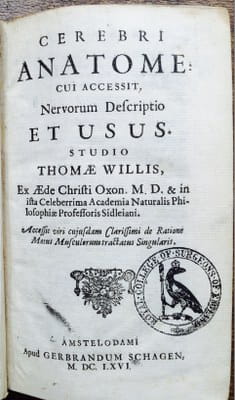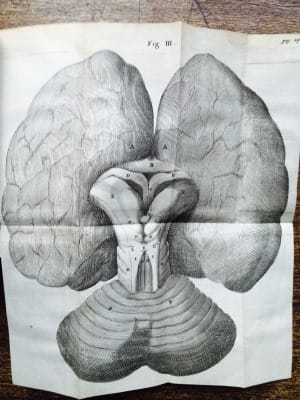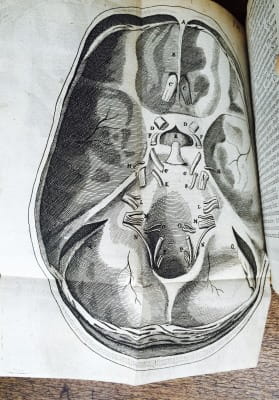Thomas Willis - Cerebri anatome - 1664
18 Aug 2015
Bulletin of the Royal College of Surgeons of England

The Cerebri anatome, first published in 1664, gave “the most complete and accurate account of the nervous system which had hitherto appeared” and was the first to use the term “neurology”. It contained the first descriptions of the “circle of Willis” and the eleventh cranial nerve (the nerve of Willis). This account of the anatomy of the brain and the discovery of saccharine diabetes were considered Willis’s finest achievements.
Thomas Willis (1621-1675) became a wealthy and much respected physician. His reputation was greatly enhanced by his part in reviving a woman hanged for the murder of her illegitimate child who had been taken to his friend Petty’s rooms for dissection. When it was realised that the “corpse” was still breathing, Willis and Petty practised a form of primitive cardiac massage and she recovered to successfully sue for pardon. A contemporary broadsheet commented “Thus ‘tis more easy to recall the dead / than to restore a once-lost maidenhead”.
The content of this article was taken from the Bulletin of the Royal College of Surgeons of England, 2000, Vol. 82 No. 8. The images are taken from our 1666 and 1667 copies of the work.





